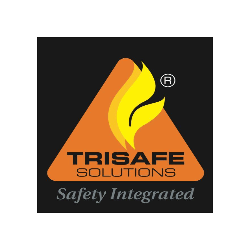We undertake sales , service, maintenance, hydrotesting and refilling all Types of Fire Extinguishers Powder / Extinguishing agent Refilling.
Over time or after use fire extinguishers can deplete leaving you unprotected in the event of fire our team provides quick and efficient refilling services for all types of fire extinguishers using high quality firefighting agents.
Why Choose Us?
- Expertise: With years of experience in safety solutions, we bring unparalleled expertise to every filling operation.
- Quality Assurance: Our processes adhere to the highest industry standards, ensuring reliable and effective fire safety solutions.
- Custom Solutions: We understand that every client is unique. Our flexible services are tailored to meet your specific requirements.
- Commitment to Excellence: From prompt service to competitive pricing, we are committed to delivering excellence in every interaction.
Our Promise
At TRISAFE, safety is our priority. Whether you need a one-time refill or ongoing maintenance, trust us to keep your fire extinguishers in optimal condition. Discover peace of mind with our efficient and reliable services.
Get Started Today
Explore the benefits of partnering with TRISAFE for your fire safety needs. Contact us today to learn more about our Fire Extinguisher Powder filling services and how we can support your business
A brief of Various Fire Hazards and the Extinguishers, we Service for your safety Requirements
Fire extinguishers are crucial tools for combating different classes of fires. In India, fire extinguishers are classified based on the types of fires they can effectively extinguish, as per IS 15683:2006 standards. Here are the main types:
1. Water Fire Extinguishers (IS 940):
- Class of Fire: Class A (ordinary combustibles like wood, paper, cloth)
- Performance: Cools the fire and extinguishes it by reducing the temperature below the ignition point.
2. Foam Fire Extinguishers (IS 11334):
- Class of Fire: Class A and B (flammable liquids like petrol, oil, paints)
- Performance: Forms a blanket of foam over the fuel, excluding oxygen and cooling the fire.
3. Carbon Dioxide (CO2) Fire Extinguishers (IS 2878):
- Class of Fire: Class B and C (flammable gases and electrical fires)
- Performance: Displaces oxygen, suffocating the fire. Also, suitable for electrical fires as it does not leave residue.
4. Dry Powder Fire Extinguishers (IS 14609):
- Class of Fire: Class A, B, C, and electrical fires (multipurpose)
- Performance: Works by interrupting the chemical reaction of the fire, suitable for a wide range of fire risks.
5. Clean Agent Fire Extinguishers (IS 15683):
- Class of Fire: Class A, B, C, and electrical fires (halon replacement)
- Performance: Extinguishes fires by interrupting the chemical reaction without leaving residue, safe for sensitive equipment.
6. Wet Chemical Fire Extinguishers (IS 15683):
- Class of Fire: Class K (cooking oils and fats)
- Performance: Cools the burning oil, reacts with fats to form a soap-like solution that seals the surface from re-ignition.
Our Powder Refilling Specialities:
Choosing the right fire extinguishing powder depends on the potential fire hazards in your environment and ensuring compliance with local fire safety regulations and the capacity of the Cylinders used ( 4 KG/ 6KG/ 9KG etc )
1. ABC Powder (Ammonium Phosphate Based):
- Composition: Typically contains Mono-Ammonium Phosphate or a mixture of Ammonium Phosphate and Ammonium Sulphate
- ), Class B (flammable liquids), and Class C (flammable gases) fires.
- Performance: Acts by interrupting the chemical reaction of the fire and inhibiting the combustion process. It forms a layer of non-flammable material on the surface of the fuel.
2. MAP Powder (Mono-Ammonium Phosphate):
- Composition: Consists primarily of monoammonium phosphate.
- Class of Fire: Similar to ABC powder, effective against Class A, B, and C fires.
- Performance: Provides rapid flame knockdown and inhibits reignition by forming a crust over the fuel surface.
- We use MAP 10,20,30,40,50 ,70 & 90 depending on the purity level for various Fire Extinguishing mediums
3. DCP Powder (Dry Chemical Powder):
- Composition: Contains sodium bicarbonate (NaHCO3), potassium bicarbonate (KHCO3), or a combination of both.
- Class of Fire: Effective against Class B (flammable liquids) and Class C (flammable gases) fires.
- Performance: Works by interrupting the chemical reaction of the fire and dispersing fine solid particles to blanket the fire, depriving it of oxygen.
4. Foam (AFFF – Aqueous Film Forming Foam):
- Composition: Typically mixture of water, foam concentrate ( mostly 3% to 6% ) ,and air.
- Class of Fire: Primarily used for Class A (ordinary combustibles) and Class B (flammable liquids) fires.
- Performance: Forms a blanket of foam that seals the surface of the fuel, preventing the release of flammable vapours and extinguishing the fire by cooling and smothering it.
5. CO2 (Carbon Dioxide):
- Composition: Pure carbon dioxide gas stored under pressure in liquefied form
- Class of Fire: Effective against Class B (flammable liquids) and Class C (electrical) fires.
- Performance: Works by displacing oxygen, reducing its concentration to a level where combustion cannot be sustained. It also cools the fire by removing heat.
6. Wet Chemicals (Potassium Acetate Based):
- Composition: Contains potassium acetate or potassium citrate solution.
- Class of Fire: Specifically designed for Class K (cooking oils and fats) fires.
- Performance: Reacts with burning cooking oils and fats to form a soapy layer on the surface, sealing off the fuel source and preventing reignition.

